Local Side Signing using ADSS Server
- Introduction
- How it works?
- Configure a Go>Sign Profile in ADSS
- Configure a Connector in SigningHub Admin
- Configure a Signing Profile in SigningHub Admin
- Add Signing Profile to a Service Plan
- Add Signing Server to a User Role in SigningHub Web
- Go>Sign Signing via SigningHub Web
SigningHub supports local signing through the Go>Sign Desktop app. The Go>Sign Desktop app has to be installed and should be running on your machine. The certificates that you want to perform signatures with should either be installed on your local machine, or be stored in the HSM token attached to your machine, based on the configurations of your Go>Sign profile. SigningHub supports the latest version of the Go>Sign Desktop app.
- Configure a Go>Sign signing profile as a prerequisite, in ADSS.
- Configure a connector, in SigningHub Admin.
- Configure a signing profile, in SigningHub Admin.
- Add the signing profile to the service plan.
- Add signing server to your enterprise user role.
- Sign the document via SigningHub Web.
Configure a Go>Sign Profile in ADSS
For local signing, a Go>Sign profile is configured in Go>Sign Service.
Make the following configurations to a Go>Sign profile:
- From the "General" section, copy the Go>Sign Profile ID because it would be used in SigningHub Admin.
- In the "Keystore Settings" section:
- If you want to sign documents using the certificates installed on your local machine, check the "OS native API (MS CAPI & Mac Keychain)" option.

- If you want to sign documents using the certificates from your HSM token, check the "PKCS#11" option. Copy and paste the sample "Device Name" and the "Library Name" in their respective fields, and click the "Add" button.
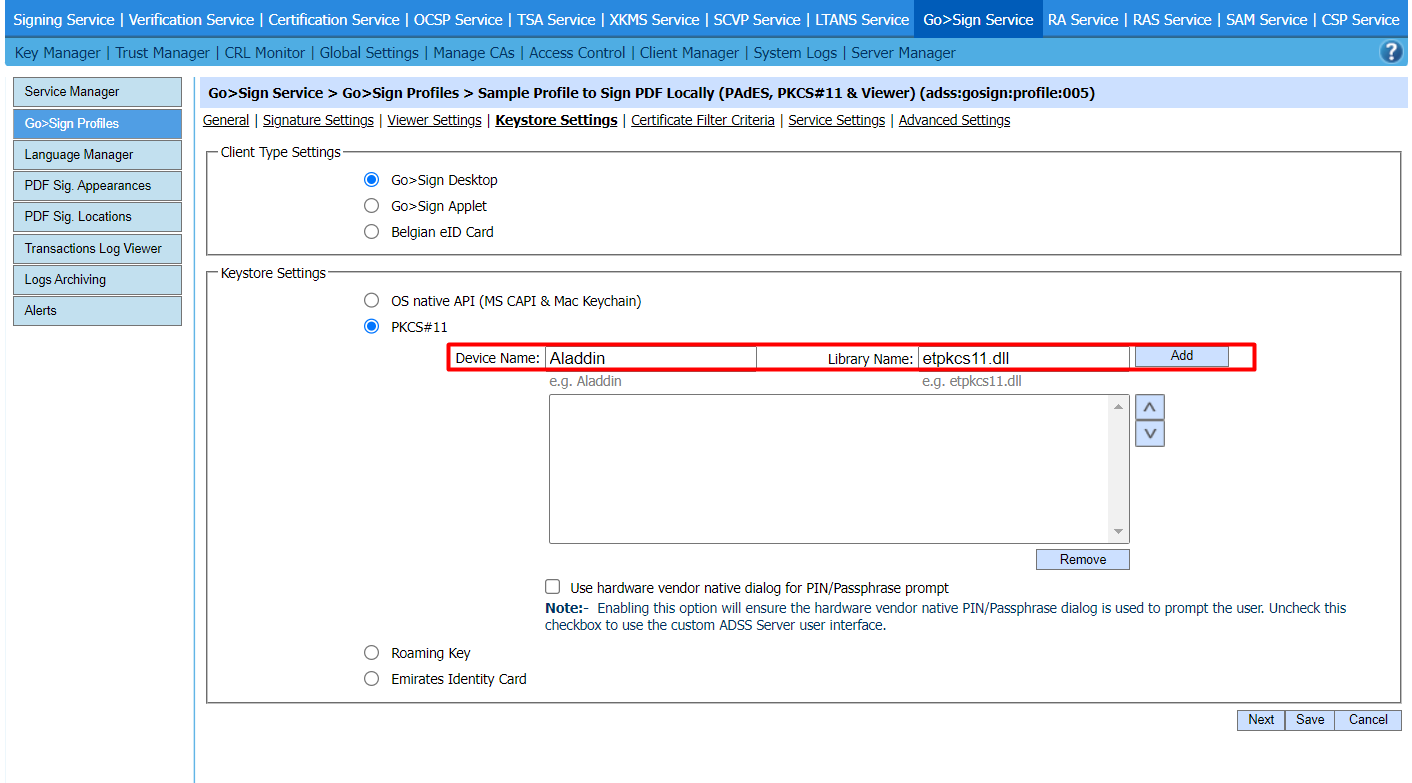
Configure a Connector in SigningHub Admin
To see in detail, how to create an ADSS Server Connector in SigningHub, click here.
Make the following configurations to a connector in SigningHub Admin:
- In the "Basic Information" section, choose "ADSS Server" as the "Provider".
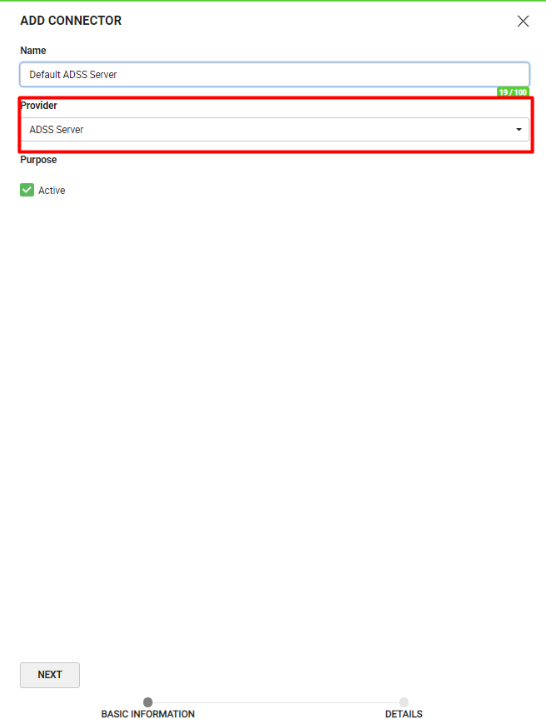
- In the "Details" section, fill in the required fields.
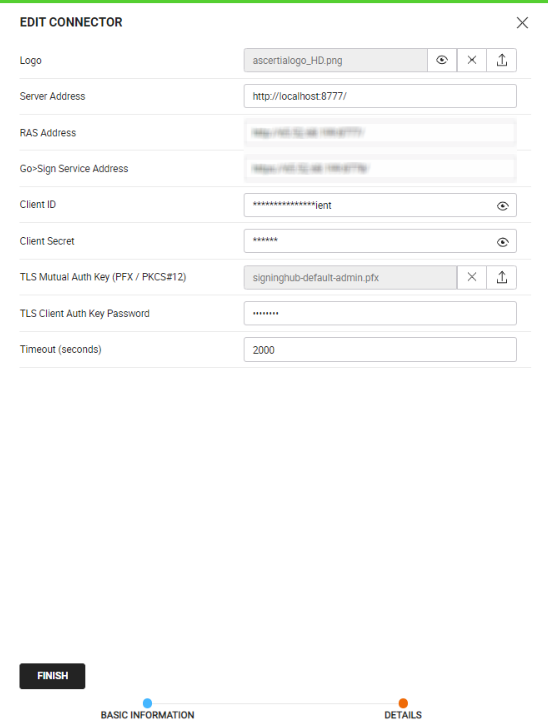
Configure a Signing Profile in SigningHub Admin
To see in detail, how to create a signing profile in SigningHub, click here.
Make the following configurations to a signing profile in SigningHub Admin:
- Paste the earlier copied Go>Sign Profile ID, while creating a Go>Sign Profile in the ADSS, in the highlighted field below:
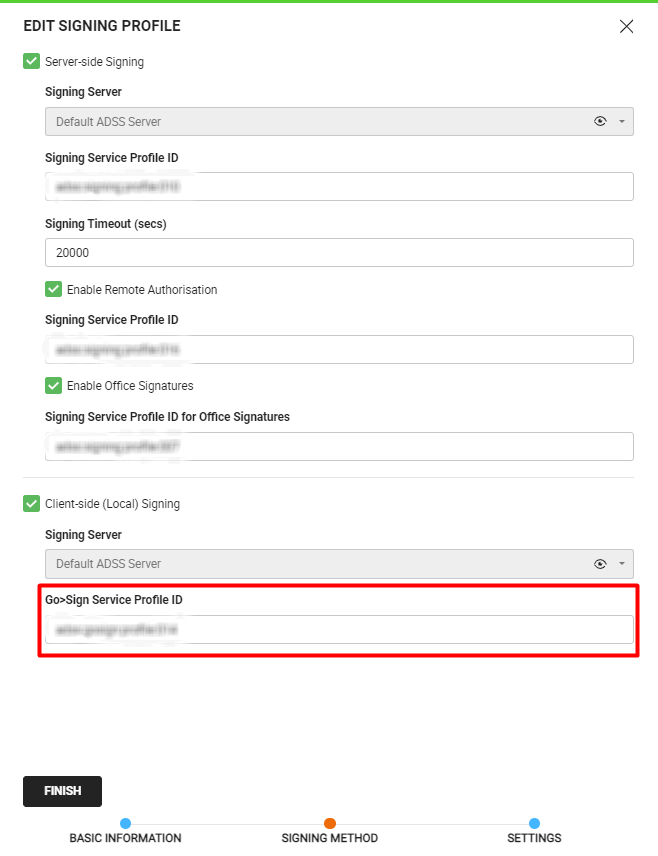
Add Signing Profile to a Service Plan
To see in detail, how to create a service plan in SigningHub, click here.
Make the following configurations to a service plan in SigningHub Admin:
- Select and add the earlier configured Signing Profile, in a service plan in SigningHub Admin, as shown below:
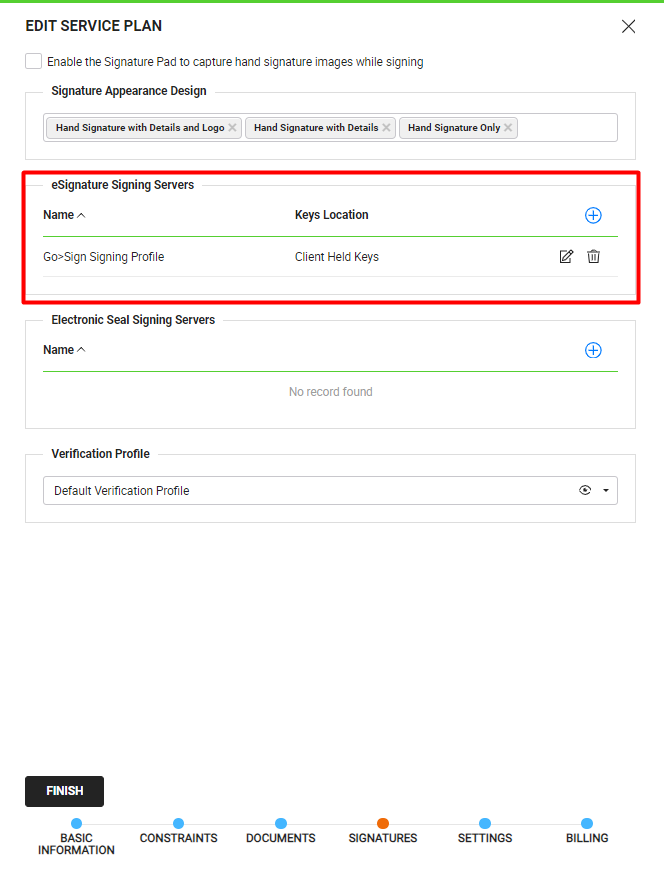
Add Signing Server to a User Role in SigningHub Web
To see in detail, how to manage enterprise user roles in SigningHub, click here.
Make the following configurations to a user role in SigningHub Web:
- Against your user role, in the "Signature Settings" tab, add the signing server.
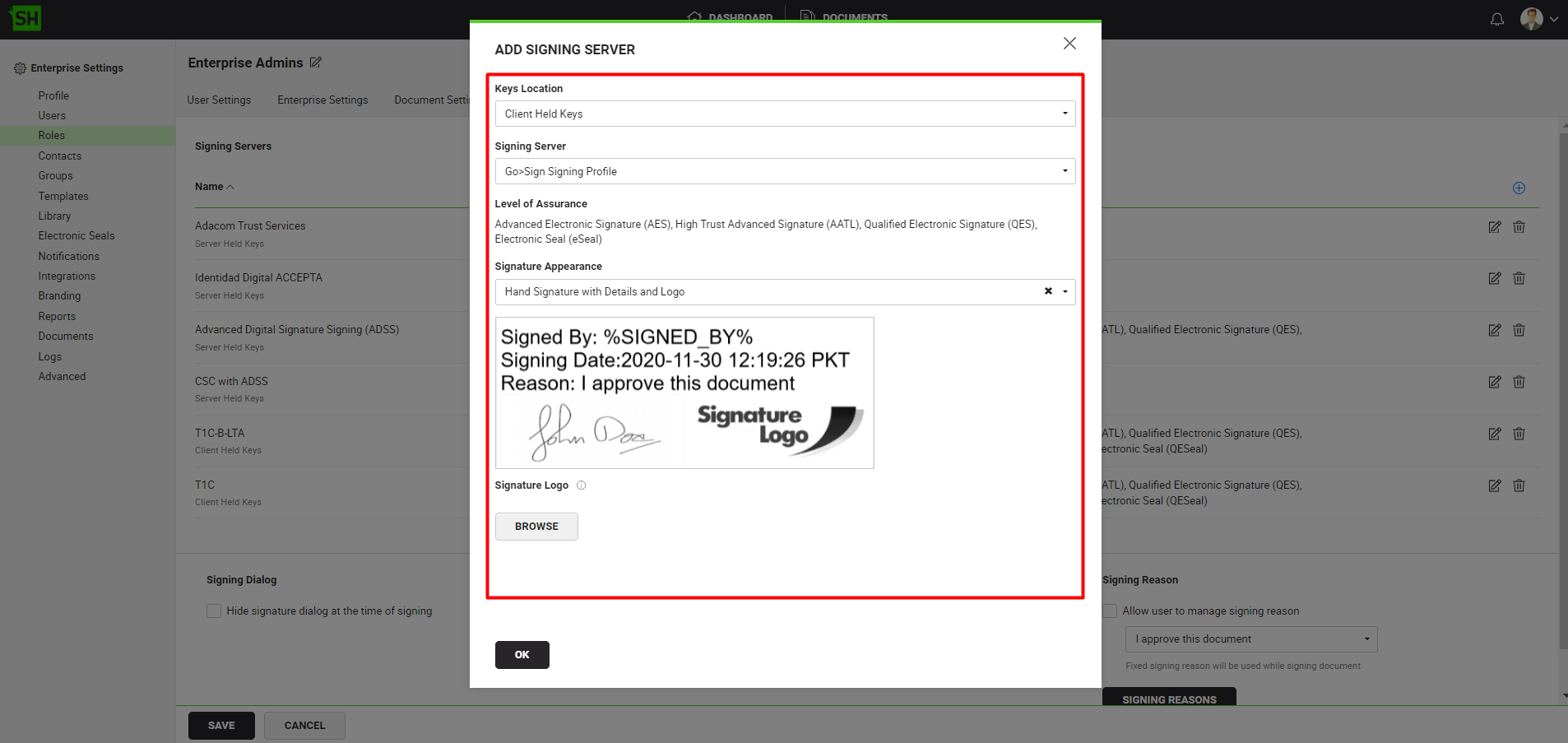
Go>Sign Signing via SigningHub Web
To sign the document via SigningHub Web, follow the below-mentioned steps:
- Open SigningHub Web and open a document having a signature field that you want to sign.
- Click on the signature field and select the Go>Sign Signing Server. Upon selecting the signing server, the system will fetch all the certificates from your local machine or the HSM token attached, based on the configurations of your Go>Sign profile.
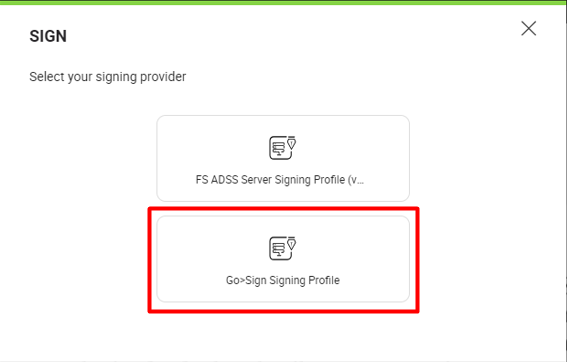
- Then click on the signature field and then click "SIGN NOW".
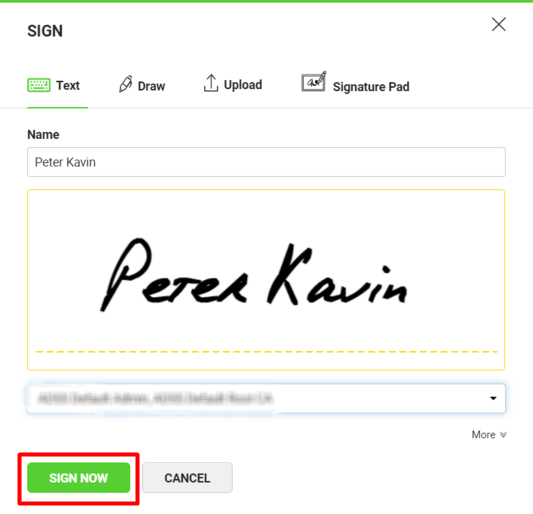
- After signing the document, click the three dots menu
 and select "Signature Verification" to view the"Signature Verification" details. The signatures are verified through the ADSS verification service.
and select "Signature Verification" to view the"Signature Verification" details. The signatures are verified through the ADSS verification service.
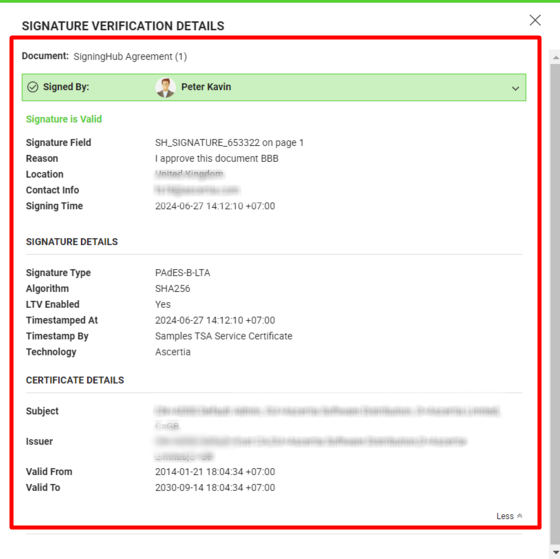
|
|
|
See Also
- XML Signing
- Word Document Signing
- Electronic Seal Signing
- eID Easy Signing
- CSC Signing
- Remote Authorisation Signing (RAS)
- Signing using Policy OID
- Local Side Signing using T1C Server
- Signing Based on National ID Validation
- Signing via Signature Pad
- Signing Behaviour w.r.t Signature Appearance
- OTP Authentication

